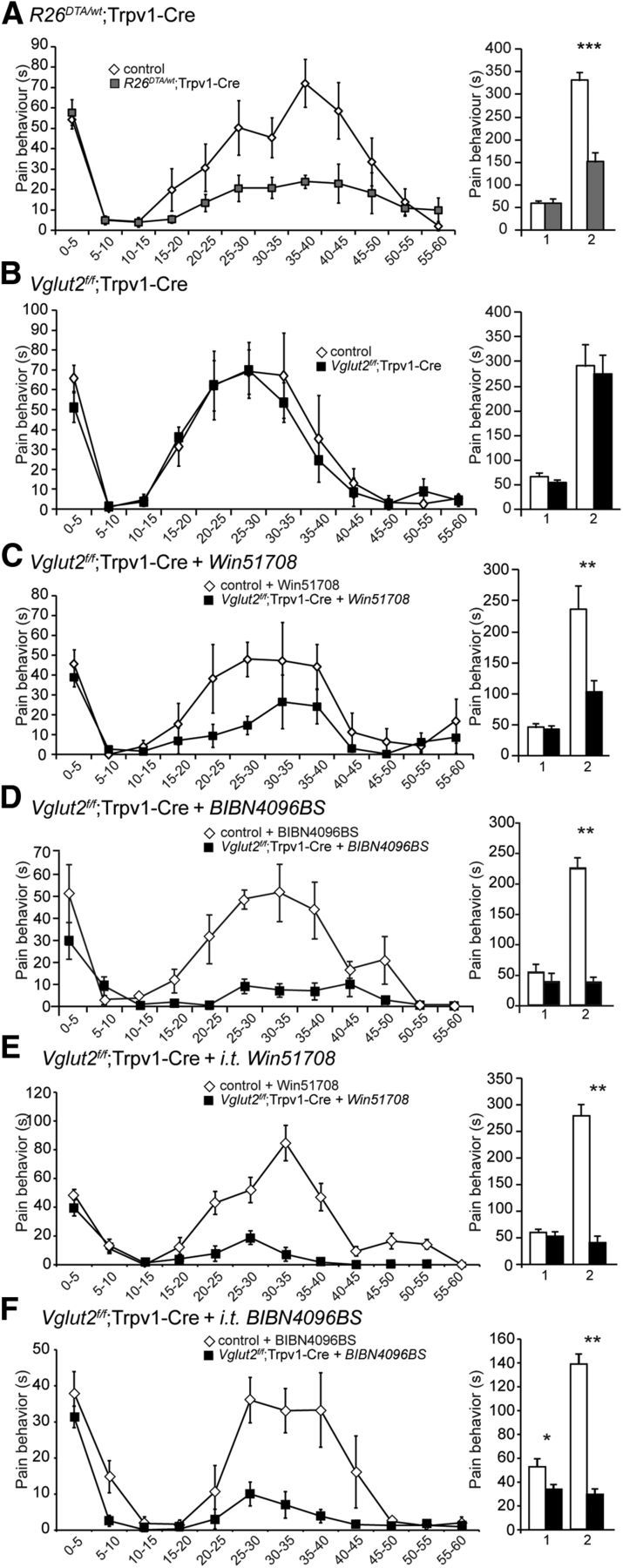Figure 4.

The second phase of the Formalin response depends on substance P-, CGRP-, and VGLUT2-mediated glutamatergic transmission. A, R26DTA/wt;Trpv1–Cre mice display an attenuated nociceptive response to Formalin in the second phase (10–60 min after the Formalin injection) but not to the first phase (0–10 min; n = 8 per genotype). The left displays the cumulative time spent licking/biting of the injected paw/time interval, and the right displays the cumulative time of nociceptive behavior/phase. B, No difference in either phase was observed between Vglut2f/f;Trpv1–Cre and control littermates (n = 8 per genotype). C, The second phase of the Formalin-induced nociceptive response was attenuated in Vglut2f/f;Trpv1–Cre mice pretreated with the substance P antagonist Win51708. Vglut2f/f;Trpv1–Cre mice and littermate controls were given Win51708 (5 mg/kg, i.p.) in DMSO (10 mg/ml) 10 min before the intraplanar Formalin injection (n = 8 per genotype). D, Similarly, BIBN4096BS injections resulted in decreased responses in the second phase of the Formalin-induced nociceptive behavior in Vglut2f/f;Trpv1–Cre mice compared with littermate controls (n = 6 per genotype). E, Intrathecal injection of Win51708 10 min prior to the formalin injection resulted in an attenuated second phase in the formalin response in Vglut2f/f;Trpv1-Cre mice compared to control mice (n = 6/genotype). F, Intrathecal BIBN4096BS injection 30 min prior to the formalin injection attenuated both the first and the second phase of the formalin response in Vglut2f/f;Trpv1-Cre mice compared to control mice (n = 6/genotype). Mann–Whitney test, two-tailed. *p < 0.05, **p < 0.01, ***p < 0.001. Data represent means ± SEMs. Shown are Vglut2f/f;Trpv1–Cre and R26DTA/wt;Trpv1–Cre (gray) and the respective controls (white).
